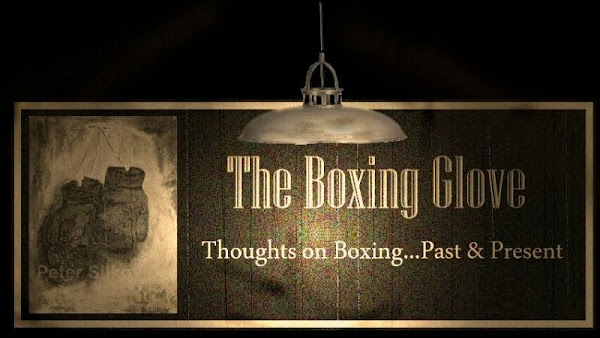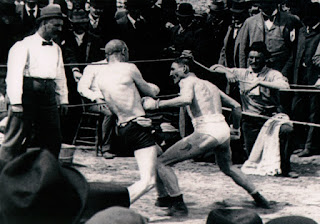The Boxing Glove Sunday Night Book Review by Peter Silkov
“The Terror Of Terre Haute”
Written by John D. Wright.
“The Terror of Terre Haute” written by John D. Wright is an engaging and vivid account of the life and times of Bud Taylor, whose big-punching, all-action fighting style made him one of boxing’s most popular fighters during the golden 1920s.
Bud Taylor was born in Terre Haute, Indiana, on July 22, 1903, into a close-knit, but relatively poor family. Bud found early on that he was gifted with his fists, taking part in many street fights, before he started to box seriously with gloves on.
After beginning his professional boxing career in 1920, at the age of 17-years-old, Taylor would go on to fight the best bantamweights and featherweights of the 1920s. In a career, which spanned 11 years from 1920, until he hung his gloves up in 1931, Taylor had around 166 officially recorded contests, which works out to an astonishing rate of one fight every three weeks.
At a time when boxing’s popularity in America was second only to baseball, Bud Taylor was one of the top fighters during what is now viewed as a ‘golden era’ in boxing. Jack Dempsey was the World heavyweight champion for much of the 1920s, and boxing was big business during a decade where Americans dedicated much of their time to enjoying themselves, with sports being one of the main vehicles used in the nation’s pursuit of recreation.
In an era where the talent was plentiful, and a fighter had to be both tough and talented just to make it into the ranks of contenders, Taylor’s fighting career culminated with him winning the World bantamweight championship in 1927. He would hold onto the title for over a year, until difficulty in making the 118 weight limit resulted in his decision to vacate his championship, and move up to the featherweight class.
“The Terror of Terre Haute” includes some fascinating descriptions of Bud’ s fights with some of the greats of his day, such as Tony Canzoneri, Jimmy McLarnin, and Bushy Graham, to name just three. Author John D. Wright has obviously done a great deal of research on the life and fighting career of Bud Taylor, and the end result is an entertaining portrait of Taylor both as a boxer, and as a man.
Taylor’s career in the ring is meticulously reviewed; the triumphs and the tragedies. Taylor had the misfortune to see two of his opponents die after they had been defeated by him, and although he was a tiger of a fighter inside the ring, outside he was a thoughtful and sensitive person who absorbed the weight of these tragedies, and never quite came to terms with them. Although he continued to box following these two deaths, they undoubtedly left their mark on him psychologically, both in and out of the ring.
John D. Wright follows Taylor into his post-boxing life, and we see how the man who had been teetotal and terrifically disciplined for most of his fighting career, embraced the high life with an almost self-destructive zeal once his career was over. In just a few years Taylor would see most of his hard won fortune drain away through a mixture of bad investments, fast living, failed marriages and fast friends, along with the ravages of the 1930s depression.
“The Terror of Terre Haute” is a poignant portrait of a man who, while being a ferocious fighter in the ring, was a gentlemanly and sensitive person outside of the ring. It is also a fascinating portrait of the world of boxing generally in the 1920s and the 1920s themselves.
In addition to a number of rare photos throughout its pages, this book also has Bud Taylor’s full professional boxing record in the back pages.
This book is a must for those who are interested in fighters of the past. Bud Taylor is revealed as a truly great fighter who fought in an era where a fighter really had to be something very special to win a title of any type, but especially a world title. It underlines, more than anything else, how boxing has changed since those days. “The Terror of Terre Haute” looks back at a time when boxing was one of the most powerful and popular sports in the world, and its champions were household names, and admired wherever they went.
“The Terror of Terre Haute” was first printed in 2008 and published by Dog Ear Publishing.
“The Terror Of Terre Haute”
Written by John D. Wright.
“The Terror of Terre Haute” written by John D. Wright is an engaging and vivid account of the life and times of Bud Taylor, whose big-punching, all-action fighting style made him one of boxing’s most popular fighters during the golden 1920s.
Bud Taylor was born in Terre Haute, Indiana, on July 22, 1903, into a close-knit, but relatively poor family. Bud found early on that he was gifted with his fists, taking part in many street fights, before he started to box seriously with gloves on.
After beginning his professional boxing career in 1920, at the age of 17-years-old, Taylor would go on to fight the best bantamweights and featherweights of the 1920s. In a career, which spanned 11 years from 1920, until he hung his gloves up in 1931, Taylor had around 166 officially recorded contests, which works out to an astonishing rate of one fight every three weeks.
At a time when boxing’s popularity in America was second only to baseball, Bud Taylor was one of the top fighters during what is now viewed as a ‘golden era’ in boxing. Jack Dempsey was the World heavyweight champion for much of the 1920s, and boxing was big business during a decade where Americans dedicated much of their time to enjoying themselves, with sports being one of the main vehicles used in the nation’s pursuit of recreation.
“The Terror of Terre Haute” includes some fascinating descriptions of Bud’ s fights with some of the greats of his day, such as Tony Canzoneri, Jimmy McLarnin, and Bushy Graham, to name just three. Author John D. Wright has obviously done a great deal of research on the life and fighting career of Bud Taylor, and the end result is an entertaining portrait of Taylor both as a boxer, and as a man.
Taylor’s career in the ring is meticulously reviewed; the triumphs and the tragedies. Taylor had the misfortune to see two of his opponents die after they had been defeated by him, and although he was a tiger of a fighter inside the ring, outside he was a thoughtful and sensitive person who absorbed the weight of these tragedies, and never quite came to terms with them. Although he continued to box following these two deaths, they undoubtedly left their mark on him psychologically, both in and out of the ring.
John D. Wright follows Taylor into his post-boxing life, and we see how the man who had been teetotal and terrifically disciplined for most of his fighting career, embraced the high life with an almost self-destructive zeal once his career was over. In just a few years Taylor would see most of his hard won fortune drain away through a mixture of bad investments, fast living, failed marriages and fast friends, along with the ravages of the 1930s depression.
“The Terror of Terre Haute” is a poignant portrait of a man who, while being a ferocious fighter in the ring, was a gentlemanly and sensitive person outside of the ring. It is also a fascinating portrait of the world of boxing generally in the 1920s and the 1920s themselves.
In addition to a number of rare photos throughout its pages, this book also has Bud Taylor’s full professional boxing record in the back pages.
 |
| Terre Haute welcomes Bud Taylor home. |
“The Terror of Terre Haute” was first printed in 2008 and published by Dog Ear Publishing.
Copyright © 2015 The Boxing Glove, Inc. Peter Silkov Art. All Rights Reserved. Peter Silkov contributes to www.theboxingglove.com and www.theboxingtribune.com























